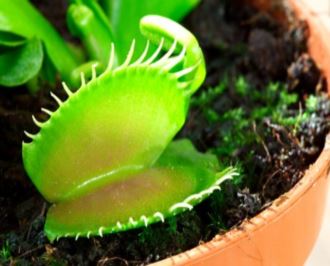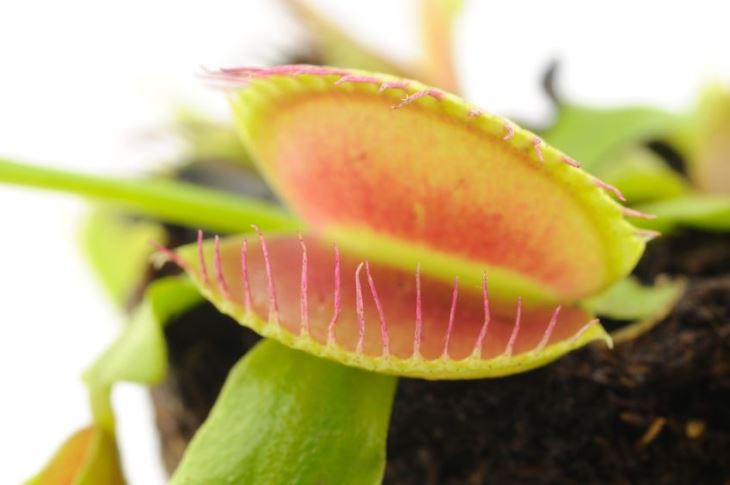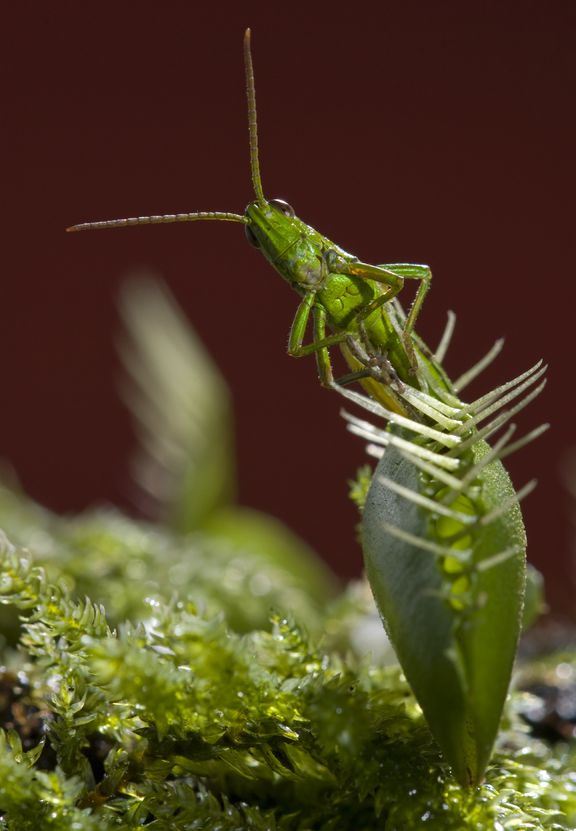






Native to the swamps of North Carolina, Dionaea Muscipula is a difficult house plant with high demands. They are found in greenhouses around America, and can live for up to 20 years. This plant will produce between four and seven large trap-like jaws, complete with unique teeth-like spines at the ends.
The leaf-base is the name given to the sections between the ground and the trap, and these are capable of performing photosynthesis for the plant. For the nutrition side of things, the leaf-blades grow in pairs and are hinged together. Fully grown, these range from three to ten centimeters in length.
How it looks and functions: The leaf-blades appear pinkish to reddish on the inside. Each leaf-blade grows two to five protrusions called trigger hairs. Three is the most common number. These sensitive hairs react any time that two of them are disturbed within 20 seconds of each other, or when the same hair is disturbed twice within ten seconds. When this occurs, the trap on most of the subspecies will close within a tenth of a second.
Each leaf-blade set is equipped with small escape areas. Any prey which is small enough to fit through these areas is deemed unworthy of the digestive effort by the plant. Prey that cannot escape, but continues to struggle within the leaf-blades, causes the leaf-blades to seal around it, becoming a stomach that digests the prey over the following ten days. A trap that has triggered inadvertently will reopen after twelve hours.
Flowering: The Venus Fly Trap produces tall stems with clusters of white tubular flowers. If left alone, each flower will produce round black seeds. Growers typically remove the flowering shoot before it reaches three inches long, as the flowering process takes energy away from the plant.
Level of care: If you are able to provide the light requirements of the plant, then caring for them is fairly easy. The dormancy period of at least ten weeks is required to keep your plant healthy.
Poisonous: This plant is non-toxic for domestic animals. (American Society for the Prevention of Cruelty to Animals - confirmed for cats and dogs.)
Smile For The Camera

This One Has Bitten Off More Than It can Chew

Copyright © www.100flowers.win Botanic Garden All Rights Reserved